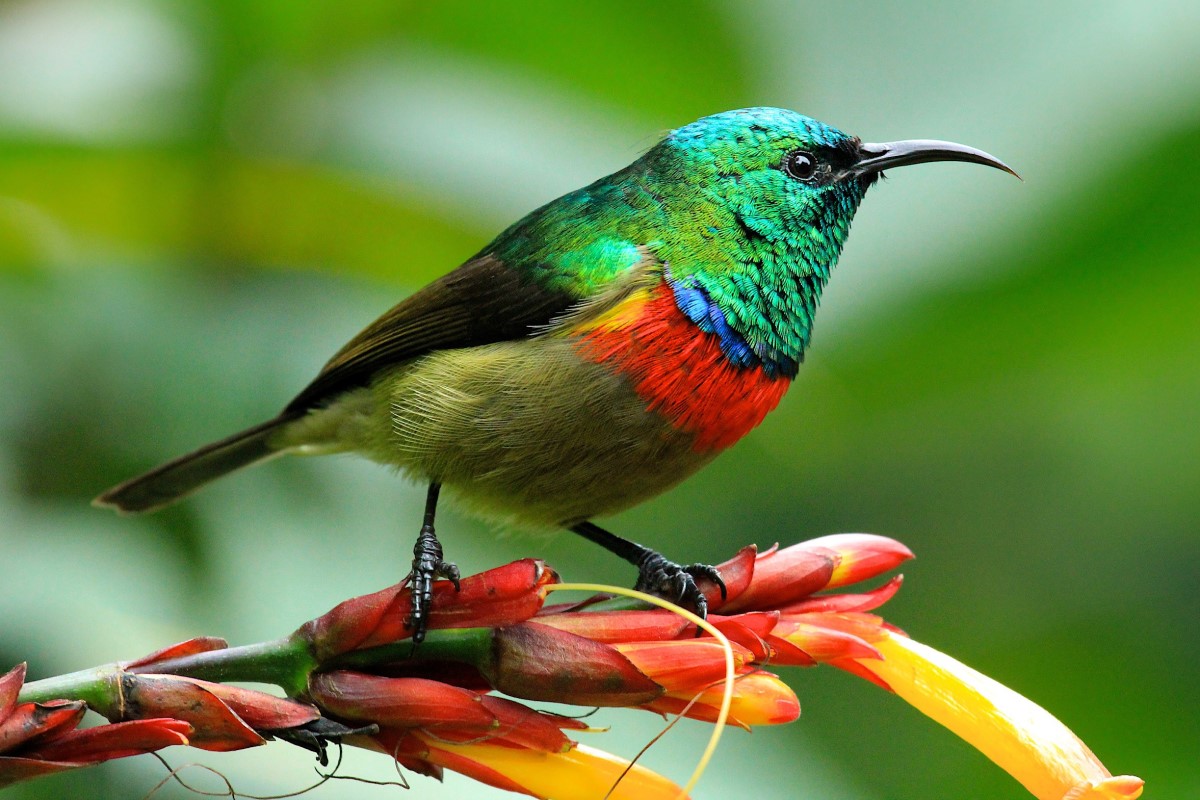A new study in Proceedings B investigates bird song evolution in the East African Double-Collared Sunbirds.

For many bird species, learning is an important part of the development of songs sung to defend territories and attract mates. In a new study in Proceedings B, the authors studied the songs of sunbirds of eastern Africa sky islands, where populations have the opportunity to evolve in isolation. They found that song evolution was better explained by a punctuated evolution model than a gradual evolution model. We recently asked Professor Rauri Bowie from the University of California, Berkeley to tell us more about the study and its findings.
Whether heard at dawn or during a daytime walk, the diversity and beauty of bird song is one of the great marvels of nature. Only three lineages - about 40% of all bird species - learn their song from parents and neighbours. Most of these belong to a single lineage, the oscine passerines. The complex musculature of their vocal organ and the large neurological centers in their brain are thought to have contributed to oscines’ ability to learn song and to the complexity of the sounds they make.
Like human language, bird song changes over time. Cultural drift is a paradigm that has been used to explain the formation of distinct bird song dialects over even short distances, just as human dialects of a language may differ from one city to another. Yet bird song evolution can also be understood as a response to natural selection, as when oscine passerine species in urban habitats raise the frequency of their song as a means to overcome traffic noise.
In our study, McEntee and colleagues report on the diversification of learned song in the double-collared sunbirds of East Africa, a species complex of oscine passerines whose members are geographically distributed across several sky islands along the eastern branch of the rift valley. The research sought to test whether isolated populations develop song differences from neighbouring populations, and whether the magnitude of these differences is proportionate to how long they have been isolated. Applying a newly developed statistical model, the research team found something fascinating and unexpected – that learned song evolves in pulses, punctuated by long periods (perhaps hundreds of thousands of years) of little change. This finding suggests that selection can tightly constrain the evolution of learned song over even long time scales, and that diversification can occur rapidly. In contrast to the expectation of gradual change through cultural or genetic drift over time, the results instead demonstrate that plastic traits such as song can exhibit punctuated evolution, with bursts of trait divergence interrupting extended periods of stasis.
What was your experience like publishing in Proceedings B?
Our experience with publishing in Proceedings B was wonderful and we hope to do so again in the future.
Proceedings B is looking to publish more high-quality research articles and reviews in the animal behaviour field. If you have an idea for a review, we strongly encourage you to submit a proposal by completing our proposal template and sending it to the journal. More information about the journal and the submission process can be found on our website.
Image credit: Eastern Double-Collared Sunbird (Cinnyris mediocris), Karatu, Tanzania. Credit Jackie Childers.




